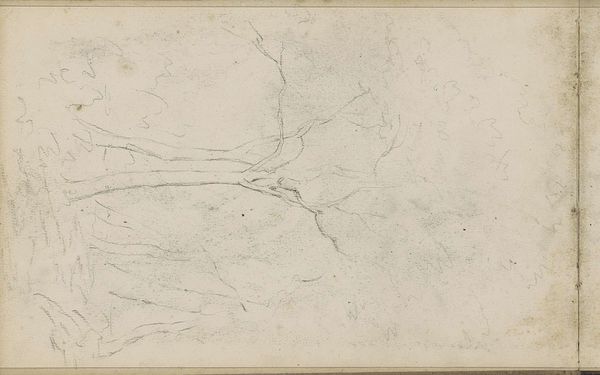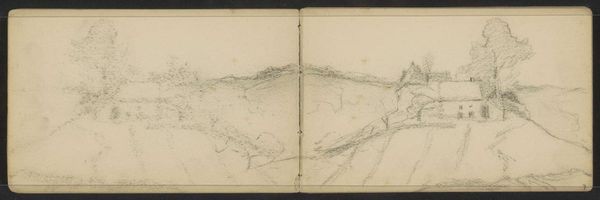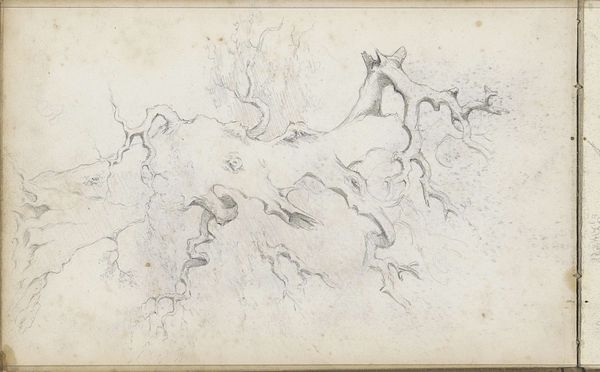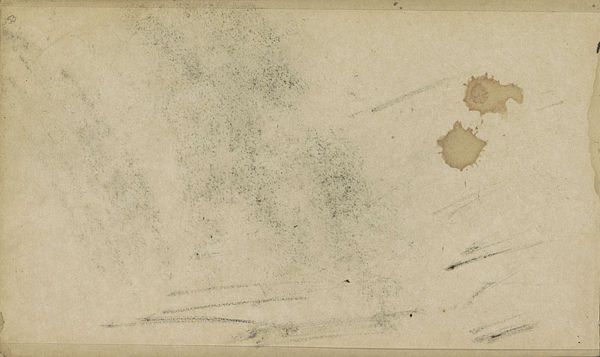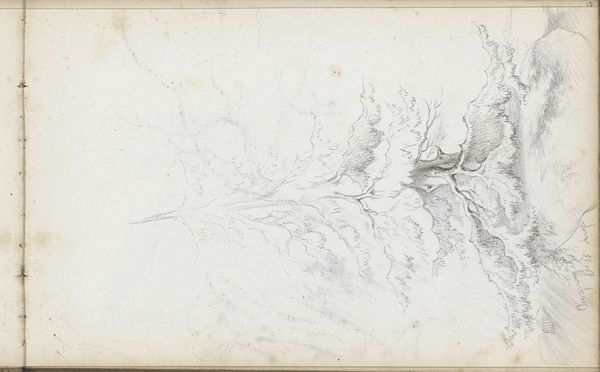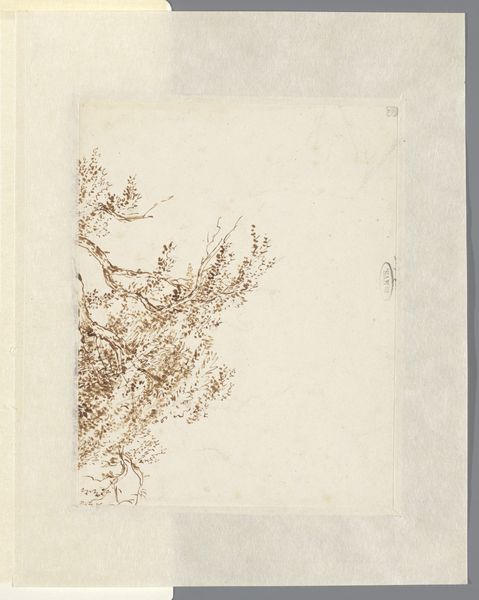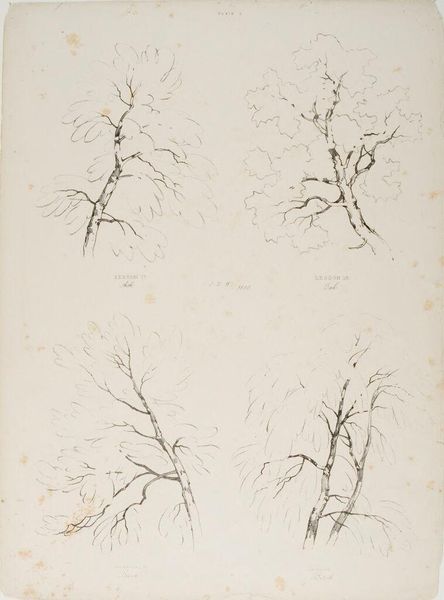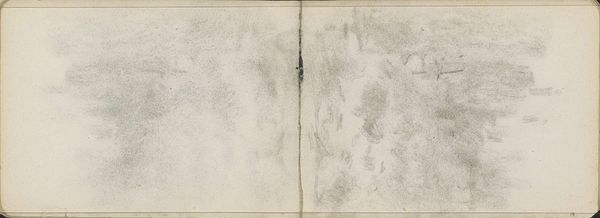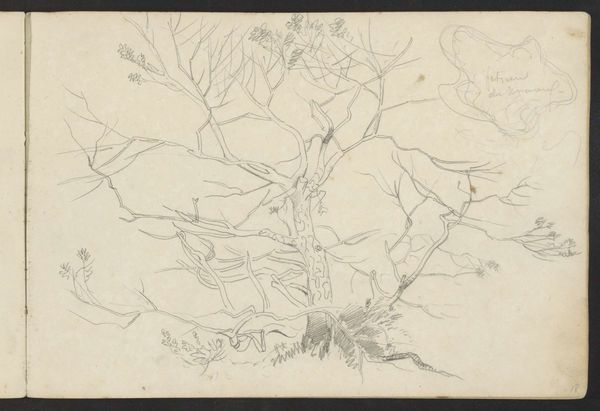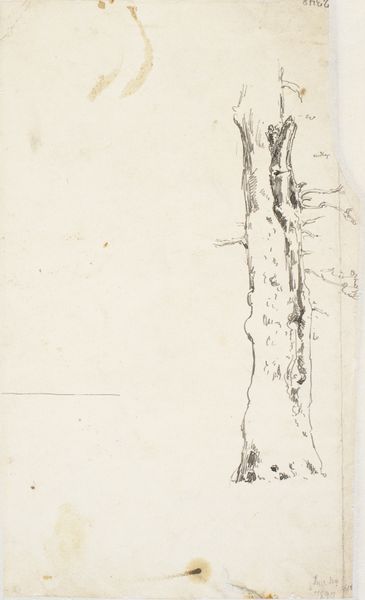
drawing, paper, ink
#
drawing
#
ink painting
#
landscape
#
figuration
#
paper
#
ink
Dimensions: height 158 mm, width 247 mm
Copyright: Rijks Museum: Open Domain
Curator: This is "Bomen," a drawing created between 1876 and 1877 by Willem Cornelis Rip, rendered in ink on paper. Editor: It strikes me as melancholic—a sense of desolation, perhaps, despite the figure present in the landscape portion of the work. The trees themselves appear withered, stark. Curator: Yes, that austerity is key. Notice the composition. On the left, we have the detailed, almost skeletal rendering of the tree branches, their lines sharp and deliberate. And on the right, the vast openness suggested by the figure overlooking a distant landscape. It’s a very controlled interplay of near and far, detail and void. Editor: But it speaks to the social context too. Rip painted during a period of upheaval—industrialization, urbanization disrupting agrarian life. Could the starkness suggest a critique of human encroachment on the natural world? Curator: Potentially, but I am much more drawn to the lines here; the bare branches, stark against the emptiness, evoke the Japanese aesthetic concept of "wabi-sabi". It's a focus on finding beauty in imperfection, impermanence, and the natural cycle of decay. Editor: Hmm. Perhaps both interpretations hold merit. The figure positioned near what looks like a fence —a boundary. Is the figure contemplating their relation to this natural space? What claims, literally and metaphorically, does that figure make? And are those trees meant to convey only aesthetics, or can we use them to highlight current concerns around deforestation? Curator: True. But considering only such direct narratives risks overlooking the artist's handling of line and light. Observe how the ink wash creates depth, contrasting with the fine lines of the branches, drawing the eye. It becomes almost an exercise in pure form. Editor: A “pure form” that is of course deeply informed by socio-historical contexts. The formal techniques can enhance the narrative. Are we to see a story about resilience here? Decay? Loss? All things have socio-political implications. Curator: An interesting read on what otherwise seems to be just a rather charming, formally compelling landscape study in ink, wouldn't you say? Editor: Yes, and I think it goes to show how context and close formal reading of technique can speak together. Thanks.
Comments
No comments
Be the first to comment and join the conversation on the ultimate creative platform.
